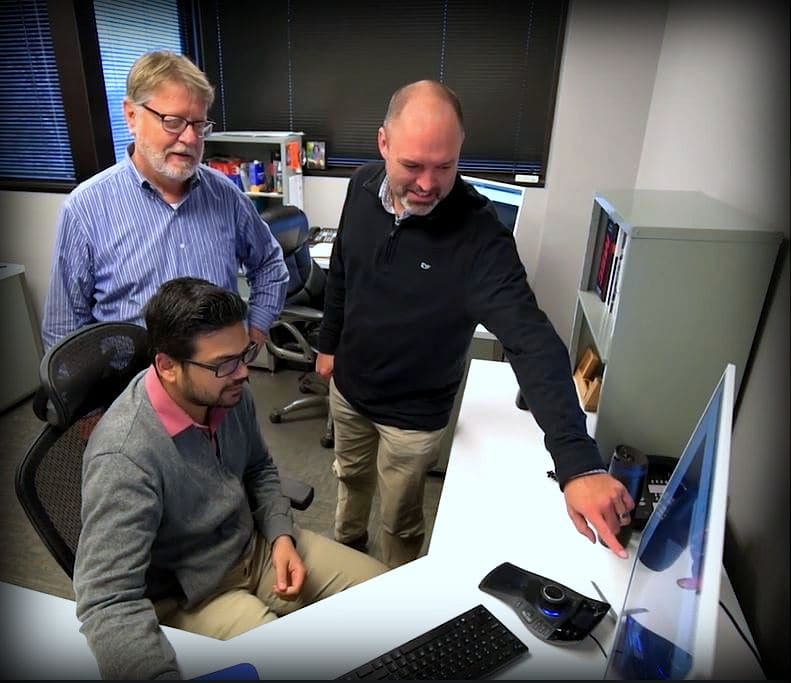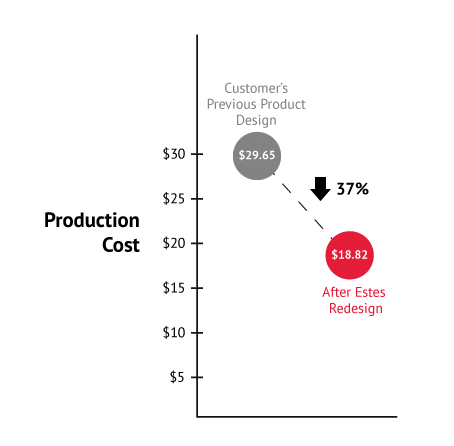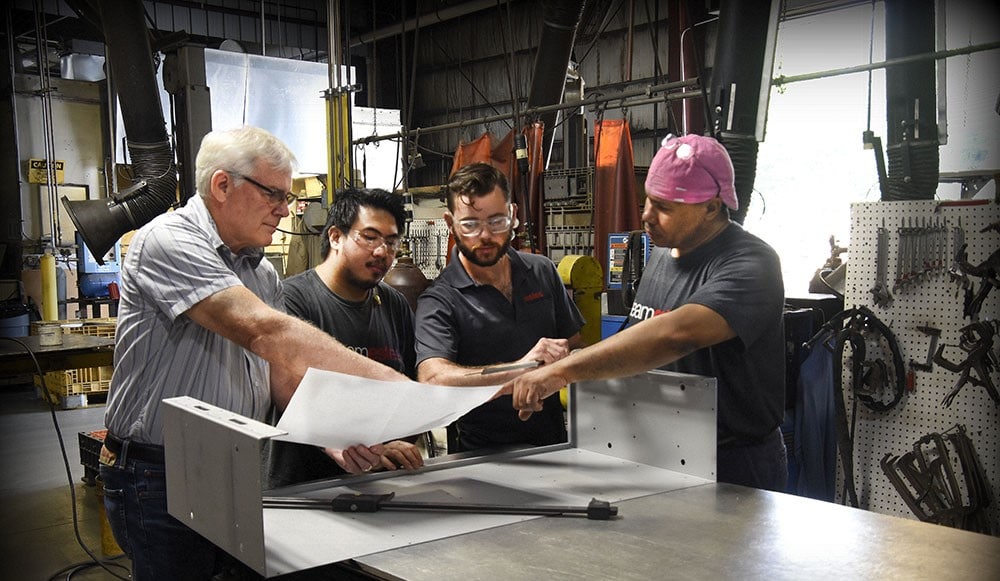Whether you are a “me-too” provider that offers cheaper versions of products already on the market, or your path to competitive success is through innovation of better products, value engineering can add value to your project and provide numerous benefits.
What is Value Engineering?
Value engineering is a systematic and organized approach used to increase the value of products by improving the function or reducing costs, with product quality remaining the ultimate goal. Simply put, value engineering seeks to produce parts as efficiently and cost-effectively as possible. Specifically in the sheet metal fabrication world, it works to find solutions for potential manufacturing and assembly impediments that could disrupt your manufacturing processes, timelines, and budget – aligning engineering and production during the design phase.
Where did Value Engineering Originate?
The process of value engineering first began at General Electric Co. during World War II. With shortages in skilled labor, materials, and component parts caused by the war, G.E. was forced to look for acceptable substitutes. Larry Miles and his team were tasked with finding these substitutes. However, the substitutes they discovered not only resulted in reduced costs but product improvements as well. This accident born out of necessity has now turned into a systematic process used by many companies today, including Estes Design and Manufacturing.
 When to Use Value Engineering
When to Use Value Engineering
Technically speaking, there is no right or wrong time to value engineer a part or project. However, the further along you are in your project, the harder it is for the value engineering process to add value to your project. The goal would be to value engineer projects at their inception and evaluate all the criteria to give you the best value and the best quality product for your application. Taking a close look at the direction a project is heading before anything is set in stone will save you valuable time later in the project by not having to change processes or make revisions to parts.
Why Use Value Engineering?
Value engineering can add value to your product and has numerous benefits including:
- Increased speed to market – If you have a tight timeline on a part or assembly but are stuck on some details of your design, value engineering will help find the quickest, best solution to fit your design and get your product underway.
- Enhanced product quality – No matter how streamlined value engineering can make a process become, or how simple it can make a part or assembly, the end result is always focused on quality. Spend the time up front on all your projects to ensure that the best materials are chosen for each specific product type, not only to be most cost effective but also to give you the best quality that can be achieved for your application.
- Improved production efficiency – Value engineering seeks to simplify production processes which result in increased reliability and repeatability. If you are able to receive the same level of quality and consistency on all the parts you order, and at the same time have the processes be much simpler, that results in significant time and cost reductions to your customers.
- Reduced cost per part – With value engineering, aspects of your project will be analyzed that you may not have considered before. Whether it be a simple part or a complex assembly, the value engineering process helps to lower the cost of your parts through redesign and simplifying the processes needed to fabricate your parts.
How to Utilize Value Engineering

So, now that we’ve learned the what, where, when, and why of value engineering, let’s get practical by examining this case study. The original design of a client’s steel pan used in a medical application was a three-piece, spot-welded assembly that cost $29.65. To increase manufacturing efficiency, the Estes team utilized the equipment in our Max Velocity forming cell. The three components were consolidated into one complex, yet more economical part with twelve bends. The state-of-the-art equipment at our disposal allows us to form extremely complex parts in a single setup with unparalleled accuracy. The redesign reduced the overall production cost to under $19 dollars and resulted in a 37% cost savings.
Partner with Estes
Estes works to help OEMs achieve cost savings through value engineering and our cost reduction processes. Utilizing the value engineering process, our team evaluates a customer’s part, looking for ways to reduce manufacturing costs and to simplify assembly. Value engineering allows us to deliver our customers’ parts at a lower cost that are easier to assemble.
If you have questions or you’re looking for a partner with proven experience in value engineering for sheet metal fabrication, Estes has the experience to deliver. Its engineers draw on their manufacturing expertise to translate ideas from concept to manufacturing while applying design for manufacturability and assembly principles throughout the development process. Contact us today to learn more or to get started on your next project!








